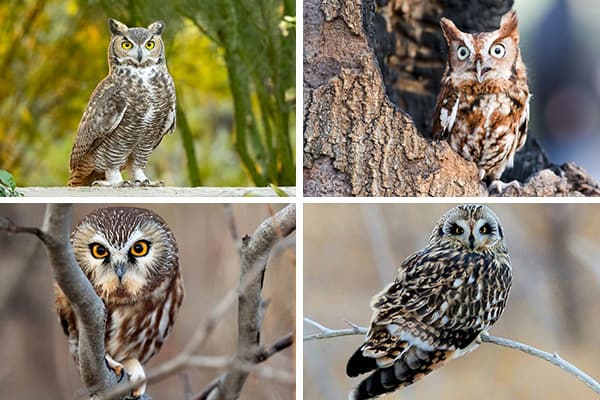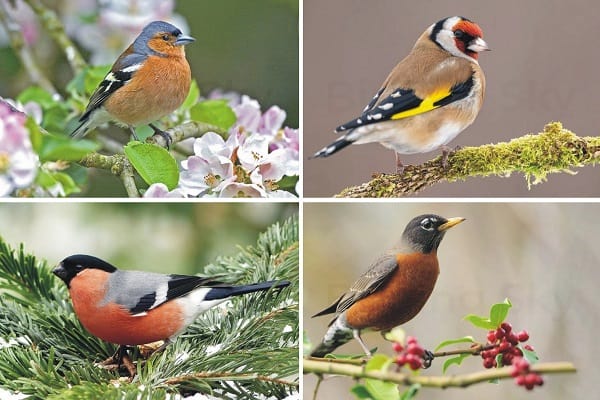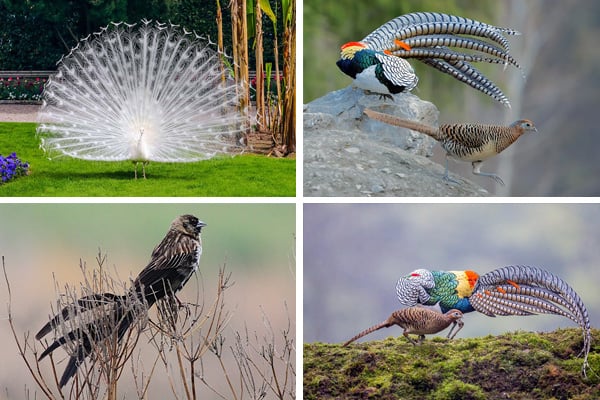6 Types of Owls in Arkansas (With Photos)
Owls in Arkansas are amazing. This state has many kinds of owls, from big to small, loud to quiet, common to rare. I researched these birds and learned a lot about them. In this article, I will share with you some of the things I discovered. You will see how owls live, hunt, and communicate in Arkansas. If you love nature and animals, you will enjoy this owl adventure
Key Takeaways:
- Arkansas is home to seven distinct owl species.
- Different owl species have unique characteristics, habitats, and behaviors.
- Owls in Arkansas offer a captivating sight for birdwatchers and nature enthusiasts.
- Understanding the diversity of owls can deepen our appreciation for the natural world.
- Knowing where to spot these owls in Arkansas can enhance your chances of observing them in their natural habitat.
6 Owl Species That Live in Arkansas
- Eastern Screech-Owl
- Great Horned Owl
- American Barn Owl
- Barred Owl
- Short-eared Owl
- Long-eared Owl
- Northern Saw-whet Owl
1. Eastern Screech-Owl
- Scientific Name: Megascops asio
- Size: 19–25 cm (7.5–10 in)
- Weight: 150–250 g (5.3–8.8 oz)
- Lifespan: Up to 14 years
- Diet: Insects, small mammals, birds
The eastern screech-owl is a captivating owl species found in the beautiful state of Arkansas. Despite its small size, this owl is known for its fascinating characteristics, unique habitat preferences, and intriguing habits.

The eastern screech owl, scientifically known as Megascops asio, is a species that can thrive in various habitats, including forests, woodlands, and suburban areas. Their preferred nesting sites include tree cavities, making them adept at blending into their surroundings and remaining hidden from predators.
This owl species is characterized by its distinctive plumage, ranging from gray to reddish-brown. Additionally, eastern screech owls have prominent ear tufts that give them a charming and charismatic appearance.
Being primarily nocturnal creatures, eastern screech-owls are most active during the night, using their excellent night vision and acute hearing to hunt for prey. These owls mainly feed on small mammals, such as mice and shrews, as well as insects and occasionally small birds.
If you’re interested in observing the eastern screech owl in its natural habitat, there are several locations in Arkansas where you have a good chance of encountering this remarkable species. Some popular spots include:
- Petit Jean State Park
- Ozark National Forest
- Buffalo National River
When venturing out to observe the eastern screech owl, it’s crucial to respect their natural habitats and observe from a distance, using binoculars or a camera with a zoom lens. This ensures that you can enjoy their presence without causing any disruption to their behavior or environment.
2. Great Horned Owl
- Scientific Name: Bubo virginianus
- Size: 45–63 cm (18–25 in)
- Weight: 1.4–2.6 kg (3.1–5.8 lb)
- Lifespan: Up to 28 years
- Diet: Small mammals, birds, reptiles
The Great Horned Owl (Bubo virginianus) is a powerful and iconic species that calls Arkansas home. Known for its distinctive tufted ears and piercing yellow eyes, this majestic owl is a sight to behold.

With its large size and impressive wingspan of up to 5 feet, the Great Horned Owl is one of the dominant predators in the Arkansas wilderness. It is a skilled hunter, capable of taking on prey much larger than itself, including rabbits, squirrels, and even other birds. Its silent flight and excellent vision make it a stealthy and efficient predator.
If you’re hoping to glimpse the Great Horned Owl in Arkansas, there are a few key areas where you’re more likely to find them. They prefer to inhabit wooded areas like forests or densely wooded swamps. Look for them near open fields or grasslands, as they often perch on tree branches to scan the surroundings for potential prey.
Best Spots for Great Horned Owl Sightings in Arkansas
- Devil’s Den State Park: This beautiful park in northwest Arkansas provides a diverse habitat for wildlife, including the Great Horned Owl. Explore the park’s trails and keep a watchful eye on the treetops.
- White River National Wildlife Refuge: Located in eastern Arkansas, this refuge offers a variety of habitats where the Great Horned Owl can be found.
- Pinnacle Mountain State Park: Situated near Little Rock, this state park is known for its scenic beauty and diverse wildlife.
Remember, when observing the Great Horned Owl, it’s important to maintain a respectful distance and avoid disturbing its habitat. These magnificent creatures are vital to the ecosystem and deserve our protection.
3. American Barn Owl
- Scientific Name: Tyto furcata
- Size: 33–39 cm (13–15 in)
- Weight: 400–700 g (0.88–1.54 lb)
- Lifespan: Up to 4 years (wild); can live longer in captivity
- Diet: Rodents, small mammals, birds
The American barn owl is a captivating owl species found in the beautiful state of Arkansas. With its striking appearance and haunting calls, the American barn owl adds a touch of mystery to its natural surroundings.

This charismatic owl species has a fascinating life cycle. From the moment they hatch from their eggs to their graceful flight as adults, the American barn owl goes through various stages of growth and development. Their young ones, known as owlets, are distinctively adorable with fluffy feathers.
Regarding habitat preferences, the American barn owl favors open areas such as farmlands, prairies, and grasslands. They can remarkably adapt, making their homes in barns, abandoned buildings, and even tree cavities.
If you’re eager to spot the American barn owl in Arkansas, there are a few prime locations where your chances are higher. Head to the fields and meadows near the Mississippi River, where these majestic owls can often be observed hunting for small rodents under the cover of darkness.
So, don’t miss the opportunity to witness the mesmerizing beauty and eerie calls of the American barn owl in the natural state of Arkansas. Keep your eyes and ears open as you explore the habitats where these owls dwell, and immerse yourself in the magic of nature.
4. Barred Owl
- Scientific Name: Strix varia
- Size: 40–63 cm (16–25 in)
- Weight: 0.6–1.5 kg (1.3–3.3 lb)
- Lifespan: Up to 10 years (wild); longer in captivity
- Diet: Small mammals, birds, reptiles
The barred owl is a common and recognizable owl species in Arkansas. With its dark eyes, rounded head, and distinct barred pattern on its chest, it’s hard to mistake this owl for any other. One of the largest owl species in the state, the barred owl is known for its deep hooting call that often echoes through the forest.
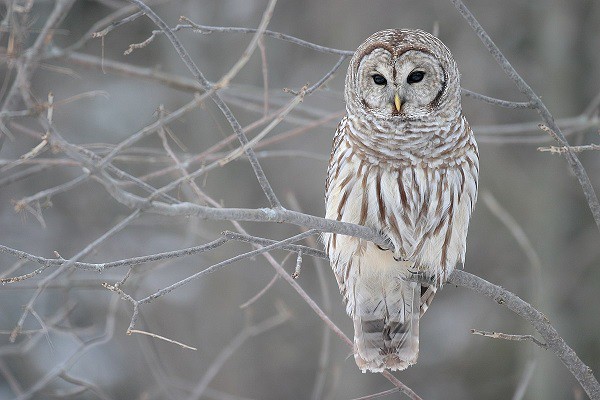
This owl can be found in various habitats, including deciduous and mixed forests, wetlands, and swamps. You can often spot them perched on tree branches or gliding silently through the woods in search of prey.
The barred owl primarily feeds on small mammals, such as mice, voles, and rabbits, but it will also eat birds, reptiles, amphibians, and insects. Its hunting prowess and ability to adapt to different environments have contributed to its success in Arkansas.
Also, Explore Hummingbirds in Florida
Distinct Features
The barred owl has several unique features that set it apart from other owl species:
- Barred pattern: The barred owl’s name comes from the distinctive horizontal barring on its chest, which helps camouflage it in its woodland habitat.
- Rounded head: Unlike some owls with pointed ear tufts, the barred owl has a rounded head that adds to its friendly and approachable appearance.
- Dark eyes: Its large, dark brown eyes contribute to its striking appearance and enhance its night vision.
Vocalizations
“Who cooks for you? Who cooks for you all?”
The barred owl’s call is one of the most recognizable sounds in the forest. Its hooting call resembles someone asking, “Who cooks for you? Who cooks for you all?” This distinctive call can often be heard at dusk, dawn, and throughout the night.
Prime Locations
If you want to observe the barred owl in Arkansas, here are some prime locations where you’re likely to spot one:
- Hot Springs National Park
- Ouachita National Forest
- Buffalo National River
- Ponca Wilderness
Remember to keep a respectful distance and refrain from disturbing their natural behavior. Enjoy the beauty and majesty of the barred owl in its native habitat.
5. Short-eared Owl
- Scientific Name: Asio flammeus
- Size: 33–43 cm (13–17 in)
- Weight: 250–600 g (0.55–1.32 lb)
- Lifespan: Up to 4 years (wild); can live longer in captivity
- Diet: Small mammals, particularly voles and birds
Among the fascinating owls in Arkansas, the short-eared owl stands out for its unique hunting behavior and physical characteristics. Unlike most owls, the short-eared owl prefers to hunt during the day, making it easier to spot in certain areas of the state. Its small, barely visible ears give this species its name and distinguish it from other owl species.
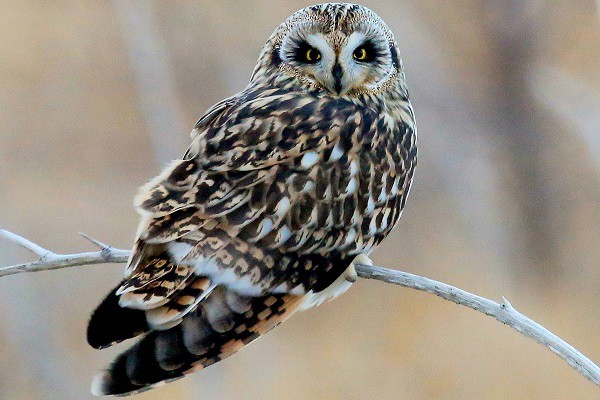
The short-eared owl’s hunting technique involves flying low over open grasslands, marshes, and agricultural fields, scanning the ground for small mammals like mice, voles, and even small birds. Its keen eyesight and acute hearing can detect prey beneath the grass or snow cover. Once spotted, the owl swoops down to capture its prey in its sharp talons.
Regarding physical appearance, the short-eared owl can be recognized by its mottled brown plumage with streaks and bars, which provides excellent camouflage in its preferred habitats. Its wingspan of up to 38 inches makes it relatively larger than other owl species in Arkansas.
If you want to glimpse the short-eared owl in Arkansas, head to open grasslands, marshes, or areas with agricultural fields. They are often found in the northeastern part of the state, particularly in winter when they migrate south from their breeding grounds in Canada and the northern United States.
Quote from a local birdwatcher: “I’ve had the incredible experience of watching the short-eared owl glide silently above the prairies of Arkansas. Its unique hunting behavior and striking appearance make it a truly captivating species to observe!”
To summarize, the short-eared owl in Arkansas is known for its daytime hunting behavior, short ears, and mottled brown plumage. It can be found in certain areas of the state, particularly in open grasslands and marshes, during the winter months. Keep your eyes peeled, and you may be lucky enough to spot this remarkable owl species in action.
| Hunting Behavior | Physical Characteristics | Habitat | Migration Pattern |
|---|---|---|---|
| Flying low over open grasslands, marshes, and agricultural fields | Mottled brown plumage with streaks and bars | Open grasslands, marshes, and areas with agricultural fields | Winter migration from Canada and northern US to Arkansas |
6. Long-eared Owl
- Scientific Name: Asio otus
- Size: 33–40 cm (13–16 in)
- Weight: 300–600 g (0.66–1.32 lb)
- Lifespan: Up to 15 years (wild); longer in captivity
- Diet: Small mammals, particularly rodents and birds
The long-eared owl is named for its distinctive long ear tufts, which are not actually ears but rather feathers that help with camouflage. These medium-sized owls prefer to inhabit areas with dense vegetation, such as forests and woodlands. You might spot them perched on tree branches, silently observing their surroundings. While they are mainly active at night, they can sometimes be seen during the day, especially in winter.

7. Northern Saw-whet Owl
- Scientific Name: Aegolius acadicus
- Size: 16–21 cm (6.3–8.3 in)
- Weight: 70–150 g (2.5–5.3 oz)
- Lifespan: Up to 8 years (wild); longer in captivity
- Diet: Small mammals, insects, and birds
The northern saw-whet owl is one of the smallest owls in North America. Known for its adorable appearance, these owls are often found in coniferous forests and wooded areas across Arkansas. Their high-pitched calls resemble the sound of a saw being sharpened, hence their interesting name. If you are lucky, you might spot one of these elusive creatures roosting in tree cavities.

Due to habitat loss and other threats, the long-eared owl and the northern saw-whet owl are considered species of conservation concern. If you are passionate about protecting these amazing birds, supporting local conservation efforts and spreading awareness can make a significant difference.
You May Want to Read Related Articles:-
| Hummingbirds in Florida |
| Birds That Lay Blue Eggs |
| Birds With Orange Heads |
| White Birds in Florida with Long Beaks |
| Orange Butterfly Meaning |
Frequently Asked Questions
Q1. What type of owls live in Arkansas?
Arkansas is home to several owl species, including the Eastern Screech Owl, Great Horned Owl, Barred Owl, and Barn Owl.
Q2. Where are owls most commonly found?
Owls are commonly found in wooded areas, forests, wetlands, and even urban environments, as long as there are suitable nesting sites and food sources.
Q3. Where are owls most active?
Owls are most active during the night (nocturnal) and can often be heard calling after sunset or seen hunting in low light.
Q4. Are seeing owls rare?
While owls are not necessarily rare, spotting one can be uncommon due to their camouflaged plumage and nocturnal habits.

